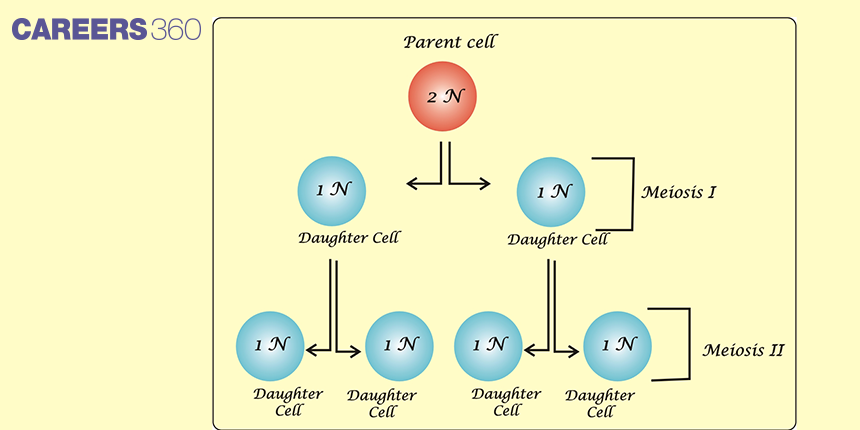Meiosis ll : Reduction Cell Division: Stages & Diagram
Definition of Meiosis II
Meiosis II refers to the second division in the process of meiosis, upon which sexual reproduction relies. As opposed to the first meiotic division that halved the number of chromosomes, in meiosis II what occurs is an equational division very much like a typical mitotic division. The sister chromatids of each chromosome are separated into two different cells. In this way, each of the four resulting haploid cells has a single set of chromosomes.
Stages of Meiosis II
The cells that enter meiosis II contain the haploid number of chromosomes.
But these chromosomes still have duplicated sister chromatids.
Therefore, the chromatids are reduced to one per chromosome during meiosis II
Prophase II
If the chromosomes decondense in telophase I, they condense again.
If nuclear envelopes are formed, they fragment into vesicles.
The centrosomes that were duplicated during interkinesis move away from each other toward opposite poles, and new spindles are formed.
Metaphase II
The sister chromatids are maximally condensed and aligned at the equator of the cell.
Anaphase II
The sister chromatids are pulled apart and move toward opposite poles.
Note that the chromatids of the chromosomes separate in this phase.
Telophase II and Cytokinesis
The chromosomes arrive at opposite poles and begin to decondense.
Nuclear envelopes form around the chromosomes.
Cytokinesis separates the two cells into four unique haploid cells.
Diagram
The given diagram shows the formation of daughter cells in meiosis I and meiosis II stages.

Significance of Meiosis
The constant chromosome number is maintained across the generations.
It helps in introducing variations and mutation.
It brings about gamete formation.
It helps in doing research and learning about genetic disorders, and how mutation and variation in genes are passed on to the next generation.
Recommended video on Meiosis II
Meiosis II and Human Health
Errors in meiosis II can lead to genetic disorders in which the number of chromosomes is incorrect. Most commonly this is aneuploidy, having more or fewer than 46 chromosomes. Chromosomal disorders can result in a range of developmental and health problems. For example, having an extra copy of chromosome 21 causes Down syndrome. Turner syndrome is a condition in which a female has only one X chromosome instead of two.
Research on the mechanisms of Meiosis II may greatly aid in the field of medicine. It helps scientists to understand mechanisms which form the grounds for genetic disease. Medical treatments, being capable of correcting chromosomal defects at the cell level, could therefore be applied to the curing or averting of genetic disorders.
Conclusion
Meiosis II is of central importance in sexually reproducing organisms to achieve genetic diversity and stability. It is possible by the separation of sister chromatids, as well as in the maintenance of the haploid state. This is a crucial genetic process that affects the very mechanisms of evolution and heredity.
Ongoing research continues to reveal more of the details of Meiosis II. It continues to promise new insights that can be capitalized with enormous potential, especially in genetic therapies and genetic disorders.
Frequently Asked Questions (FAQs)
Stages of Meiosis II are:
Prophase II
Metaphase II
Anaphase II
Telophase II followed by cytokinesis.
Errors such as nondisjunction can occur, leading to genetic disorders like Down syndrome and Turner syndrome due to abnormal chromosome numbers.
Meiosis II separates sister chromatids into two cells, thus forming four haploid cells from an initial diploid cell.
Meiosis I separates homologous chromosomes, and decreases by half the number of chromosomes, and Meiosis II separates the sister chromatids but does not decrease further the number of chromosomes.
Meiosis II ensures genetic diversity and correct distribution of the chromosomes. It truly is necessary for healthy sexual reproduction and, for evolutionary adaptation.

